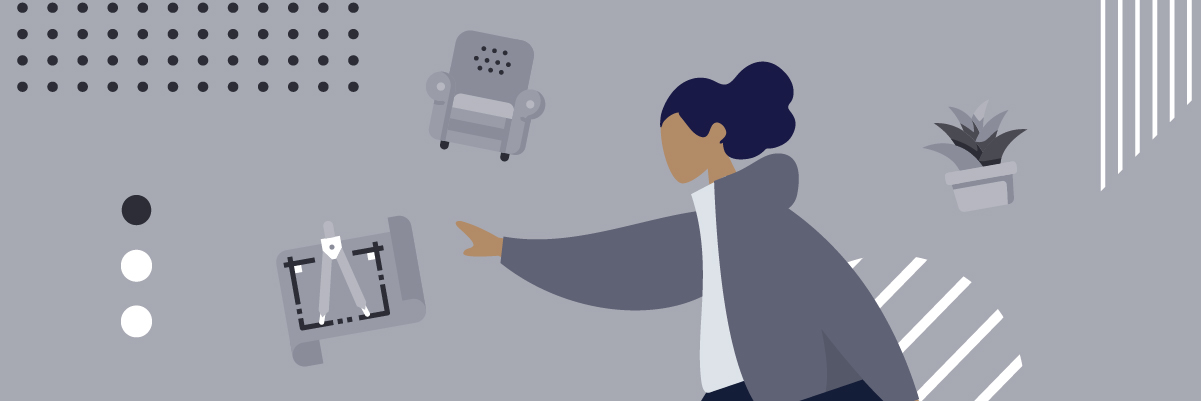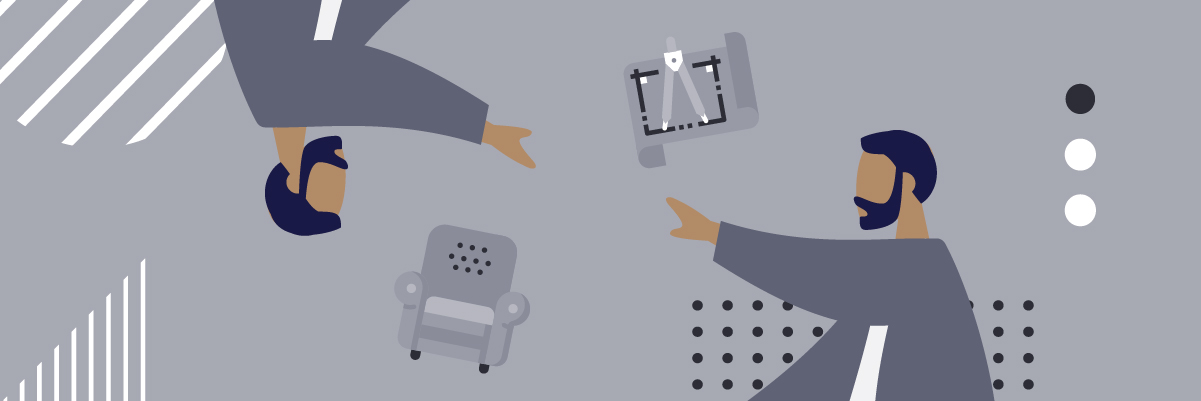Kudos if you prefer going DIY on all your home projects. It only shows that you’re courageous enough to express your sense of style. But guess what? A home designer can trigger your creative imagination and open your eyes to the most hidden aspects of your living space.
While Home Design seems obvious or a matter of preference, savvy house owners still hire experts to add a professional touch to their desired themes–and most times, the result is fantastic!
Let’s admit it, the thought of designing your home or office space begins with a sense of responsibility and the desire for a new look. But many times, your efforts hit rock bottom, or you wind up in an entanglement, stuck between two or more themes.
Whether you prefer an open design or a minimalist approach, involving a professional can ensure you get the best results.
This post will discuss the importance of hiring a home designer, the cost of hiring one, and what to look for when vetting artists.
This post has been updated in September 2021.
The Elements of Home Design
Right from the curb appeal to the interior rooms, nothing is as welcoming as a well-groomed home.
The beauty that meets your eye is often a combination of several components merged to form an attractive home or working space.
Of course, we aren’t blind to the appealing aesthetics of a well-designed home. Still, any other Jane, John, and Jerry can’t fathom the complexities that go into these projects.
Expert designers combine the following elements:
- Color: Interior designers blend matching or contrasting colors to form the eye-catching combos and palettes we see around.
- Lighting: Both bright and dark spaces appeal to different designs and people. Professionals achieve this through natural light or artificial sources.
- Pattern: This is the artistic repetition of colors, shapes, lines, or other design components. Artists achieve this through wallpaper, fabrics, etc.
- Shape: Experts use shapes to express homeowner personality. Are you after soft rounded designs, or love seeing edges and geometric designs?
- Texture: Smooth or rough environments appeal to different homeowners. You can apply a preferred texture to walls and floors. Or add relevant decorations to achieve a smooth or rough feel.
- Space: Designers use spacing to impact different renovations. Whether you have a small room or plenty of space to fill up, there’s something for everyone.
- Functionality: A functional design accommodates all the activities in a room. Artists arrange your space carefully to ensure a family-friendly home. For instance, a kitchen must be designed with care to ensure easy usability. A proper kitchen arrangement also reduces the likelihood of accidents in the cooking area.
With all these to consider, it makes more sense to hire a professional than dive in solo.

7 Reasons to Hire a Home Designer
There are nearly a dozen reasons to involve an interior designer in your renovation efforts: from budgeting to functionality; you name it.
These experts help you achieve an attractive look without breaking the bank or using up your tiny space.
They also have the right resources to help you achieve your desired looks and are well connected to suppliers
Here are seven main reasons to hire a home designer:
1. A professional touch
You might be the ardent DIYer when it comes to home design. However, only an expert understands how to make a dull space lively without overdoing the deco.
Crappy office-space designs are the worst because your good intentions can turn counterproductive if you go for looks and forget functionality. Luckily, gurus consider all the aspects, including color, functionality, decoration, spacing, etc.
With so much to do, you can easily forget to iron one or two things and mess up the whole project. Remember, design is a multifaceted project.
2. A custom home
An experienced home designer understands the importance of tailoring projects to fit client needs.
Are you after a family home that serves both kids and adults? Or you’d like to add safety features to protect your aging loved one from emergencies? Is your style rustic (or old-school), or do you prefer traveling to the future with futuristic designs?
Whichever the case, feel free to explain your needs in detail. Only that way can you achieve a custom design.
3. A pocket-friendly project
Budgeting is a common challenge among homeowners looking to renovate their properties. However, a decoration or renovation project mustn’t rob you of all your money: You can achieve more with a reasonable budget.
Because you might not fully understand the cost of a home design project, it’s better to work with an expert.
Many designers are experts in budgeting. The most experienced ones will draft one that fits your pocket while still renovate your home to perfection.
Having done many other design jobs, these experts know where to source suitable materials for your project.
4. Finish your design in good time
Time is a bigger deal when upgrading a workplace because repairs interrupt daily activities. Therefore, beginning a project without a well-thought-out strategy can lead to costly delays. Moreover, failing to plan for funds upfront can cause sudden stops in between a renovation.
Home designers work to ensure the upgrade begins and finishes within your preferred timeframe. This is possible because they know where to source everything.
Talented designers draft a schedule based on your needs. They also develop a work process that won’t interrupt your home/office activities.
5. Everything handled for you
Maybe you have all the ideas in mind but lack the skills to rework your kitchen or bedroom. Or maybe, you don’t have the time to try a DIY.
Outsourcing this task to someone relieves you of so many duties. It also guarantees quality results and timely delivery.
A designer’s most important tasks include:
- Analyzing your space
- Deciding on the changes to make (developing a design strategy)
- Writing a work plan
- Drafting a budget
- Sourcing the materials and tools
- Hiring a workforce
- Supervising the upgrade
Without an expert by your side, you’ll mostly handle all these alone. Still, it’s best to vet the candidate beforehand to ensure they have the skillsets you need.
6. Stage your property for sale
Property lemons don’t sell. Even real estate agents won’t list your property for sale if it looks all messed up.
So what do you do with a poorly-organized house? Turn these lemons into lemonade.
Staging a home is a no-brainer for savvy home sellers.
A home designer can help you rearrange everything and add new embellishments to improve its looks. A single trip around your house should turn visitors into would-be clients. The beauty should thus begin from your curb appeal to the kitchen garden.
Don’t hesitate to hire a home designer when staging a property for sale. Staged homes sell faster and may sell for a high price than anticipated.
7. Links to the right vendors
Take a short stroll down memory lane to your latest repair. What was it like sourcing the items you needed for your project? Did it dawn on you later that you overpaid for some of the things you purchased?
Don’t stress; it can happen to anyone.
To avoid plunging into such mistakes, it is advisable to work with an expert designer. Remember, these professionals link with the best vendors throughout their years of experience.
Home artists also know where to source everything you need. This saves you time and hassle while ensuring you get authentic goods for an affordable price.
How Much Does it Cost to Hire a Home Designer
Much like other service-based offerings, there’s no one-size-fits-all when it comes to design. Instead, the amount you pay a designer may depend on a few factors, including:
- Their rate per-hour
- Project size
- Design complexity
According to homeguide.com:
“The average cost to hire an interior designer is about $5,406. Most homeowners tend to spend between $1,893 to $11,180. The hourly rates range from $50 to $200 on average (It tlanslates to around $5 to $12 per square foot). For furnishings, expect to pay cost-plus, which is 17% to 45% over retail prices.”
Because these projects tend to eat up lots of your money, it is advisable to vet a decorator before hiring them.
Up next is a detailed guide to the qualities of a competent decorating artist.
What to Look for In a Home Designer
While Home Design seems obvious or a matter of preference, savvy house owners will still hire experts to add a professional touch to their desired themes.
Therefore, why not partner with the right artist to ensure project success!
So how do you pick a qualified artist amongst many? What are the things to look at?
Let’s find out, shall we?
- Are they licensed: Some states in the US and Canada require that interior designers carry a license. If these laws apply in your region, be sure to double-check whether the candidate is licensed.
- Experience/their portfolio: Name one designer without a portfolio, and they are destined to fail because all homeowners ask for photos of previous work before hiring. Remember to ask for these too.
- Relevance to your project: Not all designers can handle your next project. Be sure to confirm that the artist understands whatever you need or have handled similar designs before.
- Reasonable rates: Affordability is key. You don’t want to spend a fortune working on a project that you can finish for a smaller amount.
- Connection: Does the candidate have the relationships you need? Do they know where to source all the items? Lastly, do they have a team of handymen to help with sophisticated designs?
- Estimated project time: The artist’s turn-around time matters, especially if the project is time-bound. Be sure to discuss this with the candidate before embarking on the project.
Nevertheless, spend time searching for a qualified expert because there’s no turning back once the project kicks off.
Concluding on Home Designers
It’s completely okay to go DIY on your home. However, some projects do need a professional touch.
Hence, don’t hesitate to search, vet, and hire a competent interior decorator who has handled similar projects in the past.
When vetting a designer, consider the above factors before hiring because there’s no stopping once you commit to a project.










